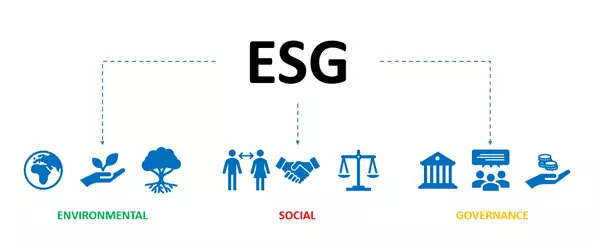This past spring Tesla’s removal from Standard & Poor’s ESG index has once again raised questions about Environmental, Social and Governance (ESG):
- How do you measure environmental responsiveness?
- What metrics should you use?
- How does ESG impact organizational performance?
One thing is for sure – ESG plays a major role in the strategies and practices of corporations worldwide.

Over the last 5-10 years, the world has been rocked by changes in how companies relate to the public, the media and regulators. Popular opinion on environmental and social issues have moved politicians, and even financial institutions, to increase scrutiny regarding corporate social responsibility.
Social media, mass social movements and shifting expectations has created both challenges and opportunities in all industries. The Canadian oil and gas industry has its own challenges but is uniquely positioned to continue leading the industry to a greener and more environmentally responsible future.
In this article, we will look at:
- What is ESG and why is it important?
- How does ESG relate to funding and investor expectations?
- Canadian oil and gas industry and key ESG targets:
- Reducing emissions
- Reducing water usage
- Employees, communities and habitats
- Diversity and social change

What is ESG and why is it important?
There is much debate on what the ESG metrics really mean.
At their most basic, ESG metrics are a set of measurable non-financial criteria used by socially conscious investors for assessing potential investments. ESG-based funds have been set-up to allow investors to choose the companies with the most positive influence on the environment, social changes, and fair governance within the company.
The metrics set a high bar and have driven up expectations on businesses in terms of their responsibilities to their customers, workers, shareholders, and financial institutions.
- Customers expect responsible and sustainable products and practices
- Employees choose their career paths and the company that they work for as much on their values as their earning potential
- Shareholders expect to see Corporate Social Responsibility programs as a priority on strategic plans
- Financial institutions expect ESG metrics to be met and improved year on year
How does this relate to Investor Expectations?
Increasingly, access to credit and investment is becoming linked to ESG performance.
Larry Fink, the CEO of Blackrock, which manages over $10 trillion USD in funds, commands a lot of attention in the investment world.
His annual open letters to Wall Street CEOs have surprised the financial world in the extent to which he equates environmental sustainability with financial sustainability. In 2016 he wrote:
“Over the long-term, environmental, social and governance (ESG) issues — ranging from climate change to diversity to board effectiveness — have real and quantifiable financial impacts.”
Where once these metrics were a way of encouraging businesses to be more sustainable for its own sake, these scores are now being seen as key indicators of future performance and the true potential of a business.
As we have seen with the large tech giants, the financial world is greatly influenced by the themes and trends followed by the largest players. Banks and investors are following the same trends and expectations have risen in terms of ESG and corporate responsibility at all levels of investment.
In September 2021, the Ontario Teacher’s Pension Plan Board (one of the largest public sector pension plans in the country) said that it would reduce its portfolio’s carbon emission intensity by 67% by 2030. This signaling of long-term investment risk increases the pressure on other financial institutions and exposes more risk to the oil and gas sector.
In the long run, the more sustainable a business is in terms of social values, climate, environmental impacts, and strong leadership; the higher its potential is to meet the challenges of the future.

ESG Performance in the Canadian Oil and Gas Industry
Reducing Emissions
The key challenge for the oil and gas industry is the reduction of absolute emissions. Absolute emissions are the total amount of Green House Gases (GHGs) emitted, whereas often cited Emission Intensity is the GHG emissions per unit of economic output.
From an investor’s point of view, the act of setting a target date for zero emissions sets apart a corporation from those which merely aim at reduction. This is what Elon Musk and Tesla have learned the hard way from their recent removal from the S&P ESG index.
Significantly, the six largest Canadian oil producers have all signed up to Oilsands: Pathways to Net Zero Emissions. This is a three-phase plan for the industry to support Canada’s commitments toward the Paris Climate Agreement.
Furthermore, Canadian firms have invested over $1B per year in R&D aimed at such technologies as
- Carbon capture projects: these have contributed to the removal of 43 million tonnes of CO2 or the equivalent of 9.3 million cars
- Reduction in the emissions during retrieval: reducing input energy to steam boilers through the use of Direct Contact Steam Generation and other technologies
- Increases in efficiency of facilities: improvements to existing facilities can greatly increase output and efficiency such as heat exchanger upgrades and utility-based improvements. Find an assessment of the 15 best strategies here
Reducing Water Use and Improving Water Quality
The continued reduction in the quantity of water used in extraction is another key component of the ESG metric for the Canadian oil and gas industry.
The design of water re-generation facilities has resulted in the reduction in ground water usage and near-elimination of the risk of contamination to fresh water sources.
Advances in Steam Assisted Gravity Drainage, especially using expanding solvents, has potential improvements of the order of 60% reduction in water usage.
Improvements in the level of pre and post-processing of water also further reduce the energy input level and improve overall efficiency and environmental impact.
Employee Welfare, Communities and Habitats
Many responsible investors put employee welfare at the heart of their financial assessment. Oil and gas companies impact local communities in a number of ways:
- Safety: the first concern in terms of safety must be for the front-line workers, often working in inherently hazardous environments. Reductions in year-over-year accidents and issues demonstrate true value is being placed on worker’s wellbeing.
- Community relations: Corporations providing gainful employment for local communities must be mindful of creating a sense of shared-benefit amongst the community. Investment in local causes, sponsorships and charities create vital links between the business, the people, and the community.
- Indigenous peoples: engaging in a meaningful way with Indigenous community members is critically important
- Preserving the natural habitat: targets for reclaiming legacy drilling locations, the creation of wildlife preservations and the supporting biodiversity leads to improved sustainability
Diversity & Social Issues
Women make up only 22% of the overall workforce in the Canadian oil and gas industry. This figure has remained stubbornly low over the past decade. Here are a few ways to close the gender gap:
- More female sponsors and mentors in senior positions within corporations
- More women in key technical positions, with key specialist roles often a pathway to senior management
- Greater investment in STEM courses aimed at women and girls to increase the talent pool for employers
Publishing the level of gender pay that exists within the company is a key indicator of transparency and progress that many ESG investors look for, and Canadian oil and gas companies should take note.
The overall diversity of the industry is also improving year-over-year.
The industry must also take note of potential substitution risk. These are mass social movements which could account for possibly the biggest risk for the industry and investors.
The move away from single use plastic in a relatively short space of time, gives an indication of the pace of change that can be faced. Polymer manufacturing from hydrocarbons is directly impacted and the switch to more economically produced and recycled plastics is a must for many businesses. Similarly, electric car adoption is a potential key indicator of the price of oil for the future.
Businesses must take note of social movements and key worldwide events as they occur. Corporations are now expected by customers and employees to pick sides and make a stand on issues. Reacting in real time with integrity and authenticity expresses the culture within a company more than slogans and advertisements ever can.
Key Takeaways
- ESG performance has a practical impact on a corporation’s funding. This will increasingly affect the ability to raise capital.
- Clarifying the vision of our energy transition gives confidence to investors that corporations, projects and initiatives are worth investing in, and are aligned with goals for are the common good.
- Social change happens fast, and corporations must be prepared to adapt and be flexible to a changing marketplace and changing world.
Planning an ESG-related project?
Vista Projects is an integrated engineering services firm able to assist with your ESG-related projects. With offices in Calgary, Alberta, and Houston, Texas, we help clients with customized system integration and engineering consulting across all core disciplines.










